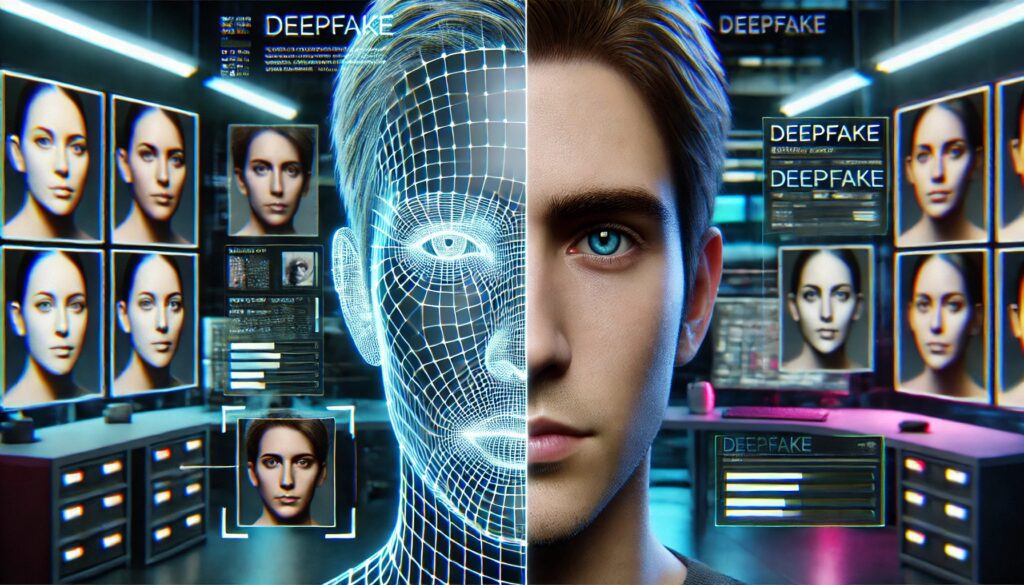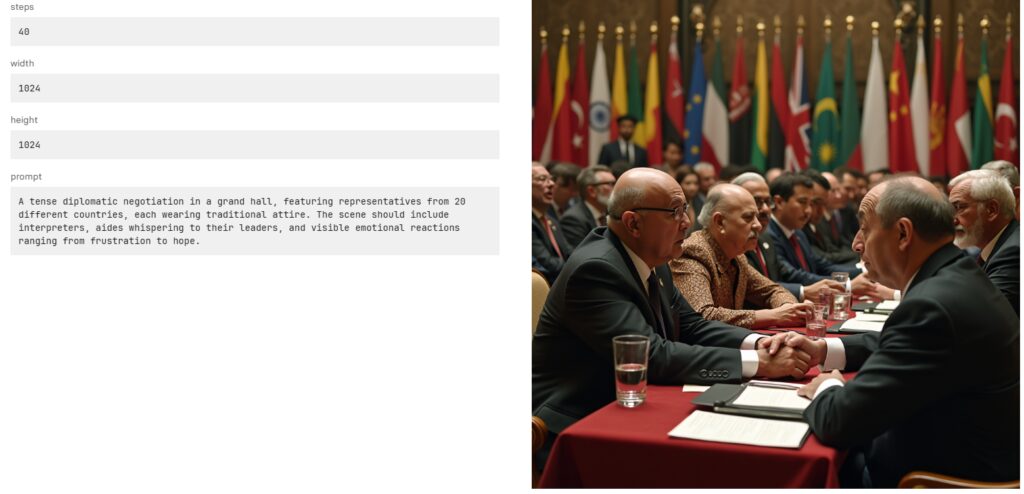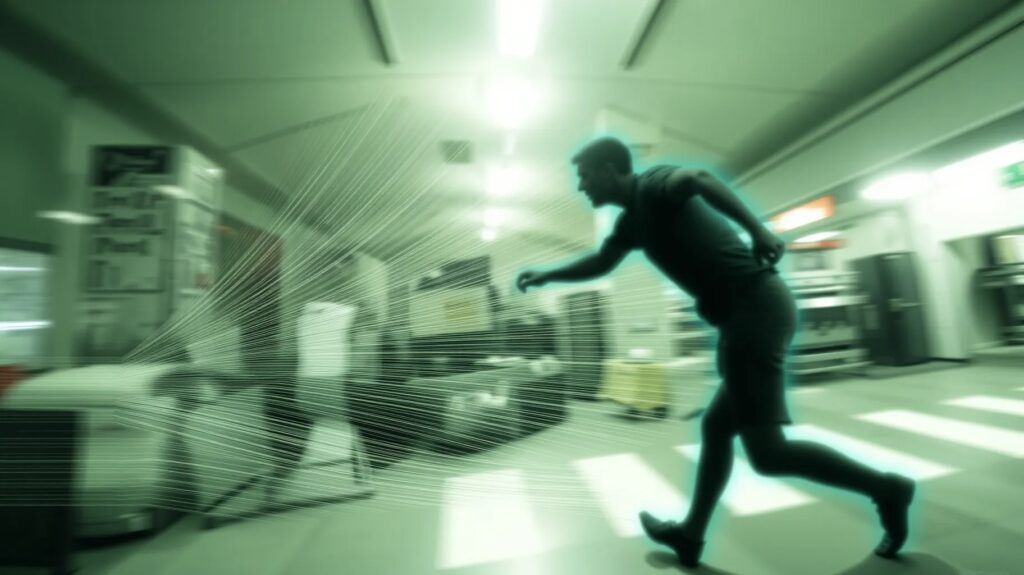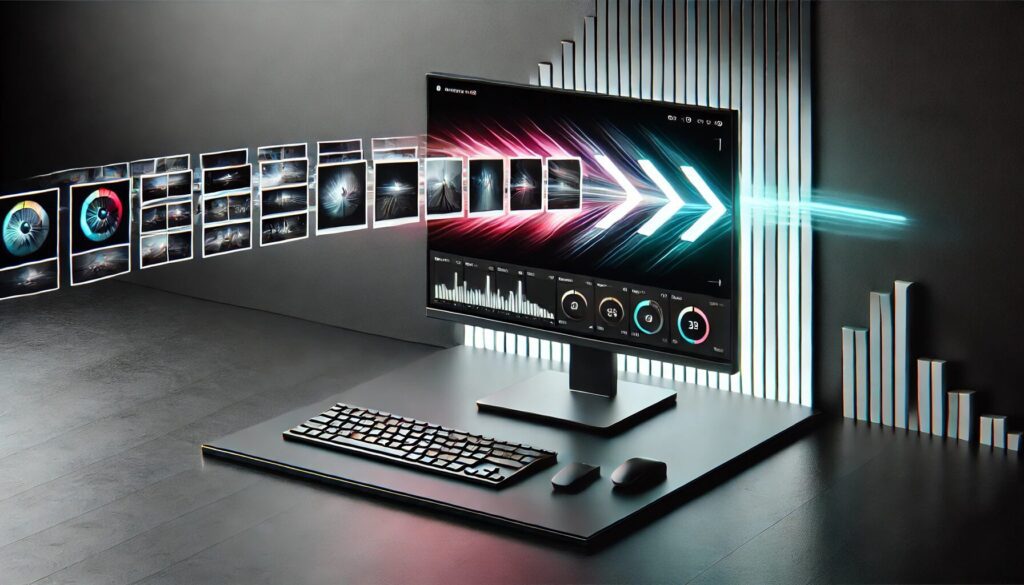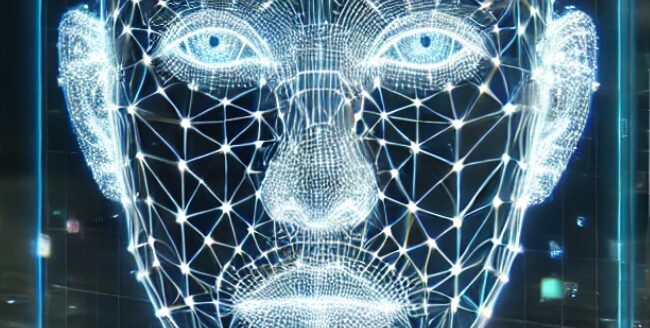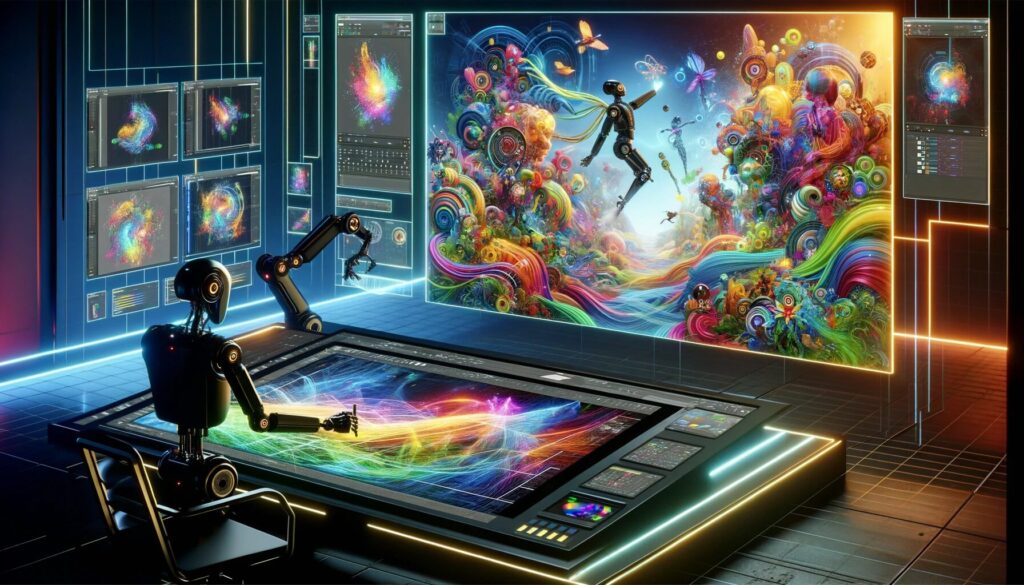
Sometimes, companies take sharp turns that make everyone raise an eyebrow. Well, TuSimple’s latest move is one of those moments. Imagine a company once at the forefront of self-driving trucks, now diving headfirst into AI-driven animation. It’s a leap that has left many wondering: What happened to autonomous vehicles? And why this sudden change?
For those who might not know, TuSimple wasn’t just dabbling in self-driving trucks. They were a leader, a pioneer. But financial setbacks, along with the intense competition in the autonomous vehicle space, have clearly forced them to rethink their strategy. Their solution? A full-on pivot into AI animation, where they hope to use their cutting-edge technology to breathe new life into this growing sector.
Shifting Gears: From Self-Driving to Animation
Now, you might be wondering, how does a company move from trucks to animation? Well, TuSimple is no stranger to AI. The technology that powers autonomous vehicles isn’t all that different from the machine learning and AI used to create high-quality animations. Both require sophisticated algorithms, vast amounts of data, and the ability to make split-second decisions.
But TuSimple’s $450 million pivot is more than just a technological shift; it’s a business one. They’re planning to move this substantial amount of funding to China, a market that’s proven to be fertile ground for AI innovation. China’s growing interest in AI, especially in entertainment and animation, gives TuSimple a chance to leverage its expertise in new ways. This is a bold play, hoping that their expertise in AI can cross over into a very different industry.
The Financial Struggles of Self-Driving Trucks
This pivot didn’t happen out of nowhere. The autonomous vehicle sector is incredibly expensive to develop, and many companies have found themselves burning through cash faster than anticipated. It’s no secret that TuSimple faced some financial struggles in recent years, as they, like many others, found it difficult to turn their innovations into sustainable profits.
With competitors like Waymo and Tesla dominating headlines and investments in the space, it seems that TuSimple recognized it was time to make a significant change. Self-driving trucks, while exciting, are still a long way from widespread adoption. Regulatory hurdles, safety concerns, and high costs have all contributed to slowing down progress. And in the world of tech, slow progress can be deadly.
Why AI Animation?
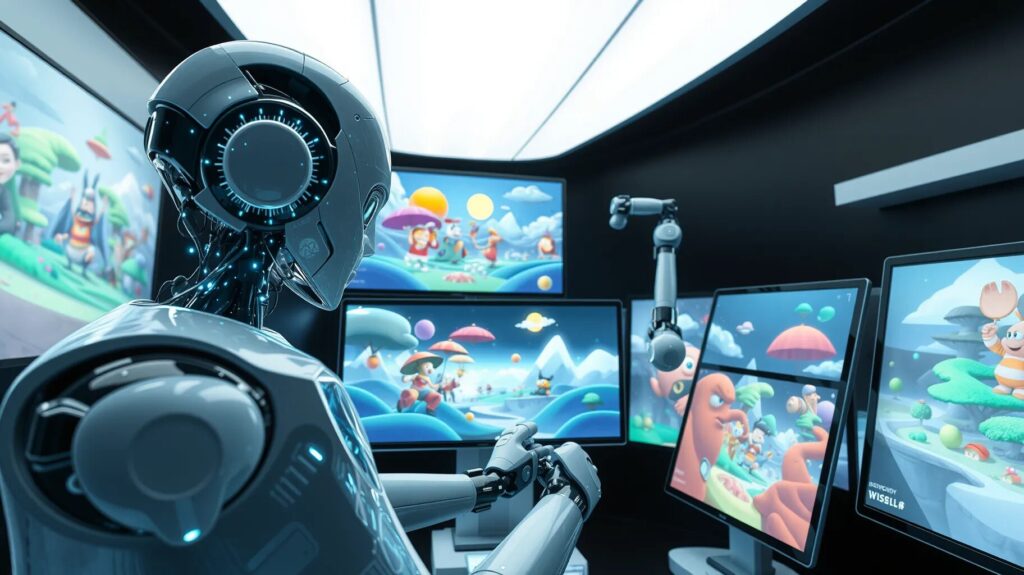
The AI animation industry, on the other hand, is booming. With the increasing demand for digital content, video games, films, and even virtual reality experiences, companies that specialize in AI-driven creative tools are in high demand. AI is no longer just about logic and numbers; it’s becoming a tool for creativity.
Animation studios are already starting to use AI tools to help with everything from automating repetitive tasks to creating hyper-realistic characters. TuSimple likely sees a world of opportunity here, where their AI expertise could be the key to unlocking new efficiencies and possibilities in animation production.
Besides, animation requires far less regulatory approval than autonomous vehicles. TuSimple’s pivot could allow them to move faster, innovate quicker, and potentially see returns on their investment much sooner.
What Does This Mean for the AI Landscape?
TuSimple’s pivot is a sign of the times. AI is evolving rapidly, and companies are realizing they need to adapt to stay relevant. The shift from self-driving trucks to animation shows just how versatile AI technology can be. It’s not just about autonomous vehicles anymore; AI is touching every industry—from entertainment to healthcare, and now, animation.
We’re seeing a broadening of AI’s applications, moving from highly specialized fields into creative and consumer-driven sectors. And while TuSimple’s future in the AI animation space remains to be seen, their move is emblematic of a larger trend—AI innovation is shifting. What was once confined to tech labs and niche markets is now infiltrating our everyday lives, from the cartoons we watch to the games we play.
What’s Next for TuSimple?
This bold pivot may mark a significant turning point for the company. By moving their focus to AI animation, they could potentially redefine themselves and secure a future in an entirely new industry. But with any big change comes risks. It’s not guaranteed that their expertise in AI for self-driving trucks will easily translate to success in animation.
Still, this move signals that TuSimple isn’t afraid to take risks and adapt to the ever-changing landscape of technology. Will they become a leader in AI-driven animation? Only time will tell. But one thing’s for sure—TuSimple is not standing still.
In a world where AI innovation is happening faster than we can keep up with, companies that can adapt and pivot are the ones that will thrive. TuSimple’s journey will be an interesting one to watch.
AI in Hollywood: TuSimple’s Move Could Disrupt the Entertainment Industry
It seems like every week, we hear about AI taking over another industry. From healthcare to finance, artificial intelligence is making its mark everywhere. Now, it looks like Hollywood is next on the list. But what if I told you the latest big player in this AI revolution comes not from the entertainment world but from, of all things, the self-driving truck industry? That’s right—TuSimple, previously a leader in autonomous trucking, has pivoted to AI-driven animation. And this move? Well, it could shake up Hollywood more than you might expect.
Hollywood’s Growing Reliance on AI
Before we dive into what TuSimple’s move could mean, let’s talk about how AI is already creeping into the entertainment business. From CGI to special effects, AI has been quietly changing how movies are made for years. Studios have started using AI to de-age actors, generate lifelike animations, and even help in the screenwriting process. In fact, AI-driven tools are already making visual effects faster, cheaper, and more accessible.
The entertainment industry thrives on innovation, and Hollywood is no stranger to tech trends. But with AI animation on the rise, things are about to get even more interesting. AI can now generate entire scenes, characters, and even voices with minimal human input. Imagine how much faster a movie could be made if machines took over the repetitive, time-consuming tasks that currently bog down animators. That’s where TuSimple’s pivot comes in.
TuSimple’s Bold Leap into AI Animation
TuSimple’s decision to jump into the world of AI-driven animation may seem like a strange move, but it’s actually a smart one. They’re betting on the growing demand for high-quality digital content, and it’s a bet that could pay off big. AI animation is already changing how movies and TV shows are made, and TuSimple is positioning itself to be at the forefront of this evolution.
By moving $450 million to China to fund their new venture, they’re not just dipping a toe in the water—they’re diving in headfirst. China’s tech landscape is fertile ground for AI innovation, particularly in the entertainment sector. With the country’s growing influence in global media, there’s no better place to experiment with cutting-edge AI technology in the entertainment world.
This isn’t just about faster animation, though. TuSimple’s expertise in machine learning could lead to breakthroughs in AI-generated content that go far beyond what we’re seeing today. If they can apply their AI knowledge to animation as successfully as they did to autonomous vehicles, we might be looking at a future where AI plays an even bigger role in Hollywood than anyone expected.
The Disruption: How AI Could Change Filmmaking
So, what does this mean for Hollywood? Well, for starters, it could disrupt the entire production process. Right now, creating a high-quality animated film or series requires a ton of time, money, and manpower. But with AI-powered animation, many of the more tedious tasks—like rendering complex scenes or building character movements—could be done in a fraction of the time.
Not only does this save on costs, but it also opens the door to smaller studios and even independent filmmakers. With AI tools, it’s easier than ever to produce professional-quality content without needing a massive budget. Imagine a world where a single filmmaker with the right AI tools can create a blockbuster-level animated feature. That’s the kind of disruption we’re talking about.
AI-Generated Content: A Boon or a Threat?
Of course, there are two sides to every coin. While AI-driven animation could lower the barriers to entry and democratize content creation, it also raises questions about the role of human creativity in Hollywood. If AI can handle so much of the animation process, where does that leave artists, animators, and filmmakers? Will they become obsolete, or will they just be free to focus on the more creative aspects of storytelling?
For now, it seems like AI will serve as a tool to enhance human creativity, rather than replace it. Filmmakers will still need to craft compelling stories, direct performances, and decide on the final artistic touches. But make no mistake: AI will be a major player in shaping the future of Hollywood.
AI and the Streaming Wars
Let’s not forget about the ongoing streaming wars. Platforms like Netflix, Disney+, and Amazon Prime are hungry for fresh, original content to keep their viewers hooked. AI-driven animation could be a game-changer here. By cutting production times, studios can pump out new shows and movies faster than ever before.
Imagine Netflix using AI tools to create new animated series that adapt instantly to viewer feedback. Did people love a certain character? AI could generate more scenes featuring that character almost in real time. The ability to personalize content based on audience preferences is something that streaming services would love to get their hands on—and AI could make it happen.
Hollywood’s Next Frontier
With TuSimple jumping into the AI animation space, we’re about to see a wave of innovation in how content is made and consumed. It won’t just be about faster production times or cost savings; it’s going to redefine creativity in Hollywood.
We could soon see AI-generated actors, entirely AI-written scripts, and movies where the lines between human and machine creativity blur. This doesn’t mean the end of human-driven content, but it does mean Hollywood needs to adapt—fast. The entertainment landscape is shifting, and AI is at the wheel.
TuSimple’s bold pivot shows just how much potential there is in AI-driven animation, not just for Hollywood but for the entire global entertainment industry. What’s exciting about this moment is that we’re witnessing the early stages of something that could revolutionize the way we think about movies, TV shows, and digital media.
The Bottom Line
TuSimple’s entry into the AI animation world isn’t just a pivot—it’s a sign of the times. Hollywood is on the verge of a major transformation, and AI is poised to take center stage. While there will undoubtedly be challenges ahead, the entertainment industry has always been about pushing boundaries and embracing new technology.
In the end, the companies that can blend technology with creativity will be the ones to thrive in this new AI-driven era. TuSimple is placing a big bet on that future, and if they succeed, they might just change the face of entertainment as we know it. The question is: Is Hollywood ready?

